- 8 oz (1 pack) cream cheese (room temperature, or microwave briefly to warm)
- 1/4 cup cocoa powder
- 1/4 cup sugar
- pinch instant espresso
- 2 eggs
- Combine the cream cheese and dry ingredients.
- Add eggs one by one.
- Bake ~20 min at 350°F.
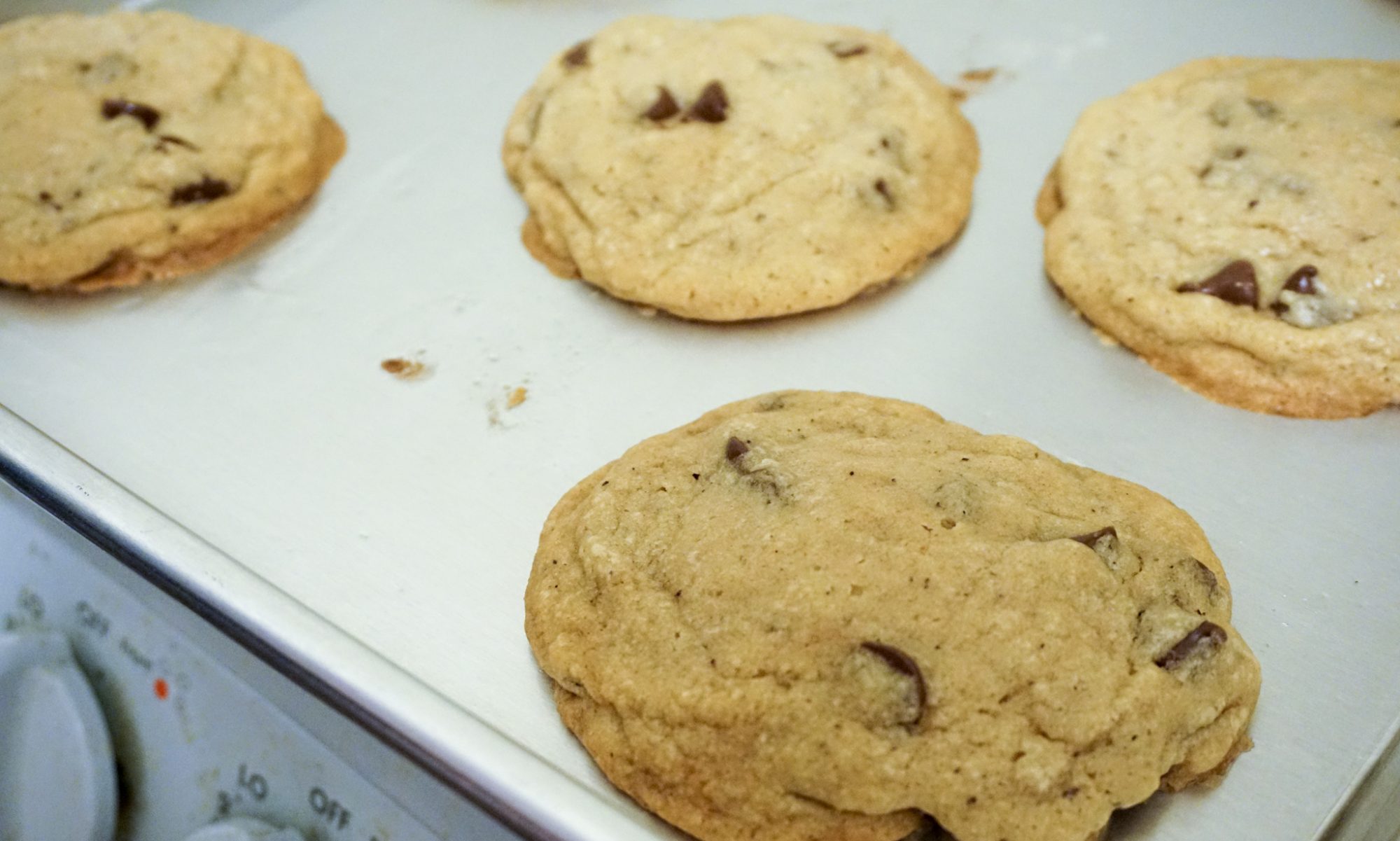
Food, sustainablity, and some other stuff
J and I went to a free advertising dinner for an appliance company. It was a neat experience. J described it as like being at an in-person infomercial. They did go a little too heavy on the advertising. I mean, I know that was the point, but they made both reasonable and laughable claims about their products (“this $10k fridge will pay for itself in reduced food waste”).
The whole showroom is like a bunch of luxury kitchens smooshed together. I enjoyed looking at all the details chosen for the different areas (e.g. yellow ceramic countertop with crackle glaze).
Interestingly, they use the actual products in the showroom to make the food for these events. I’m used to the appliances not actually being hooked up.
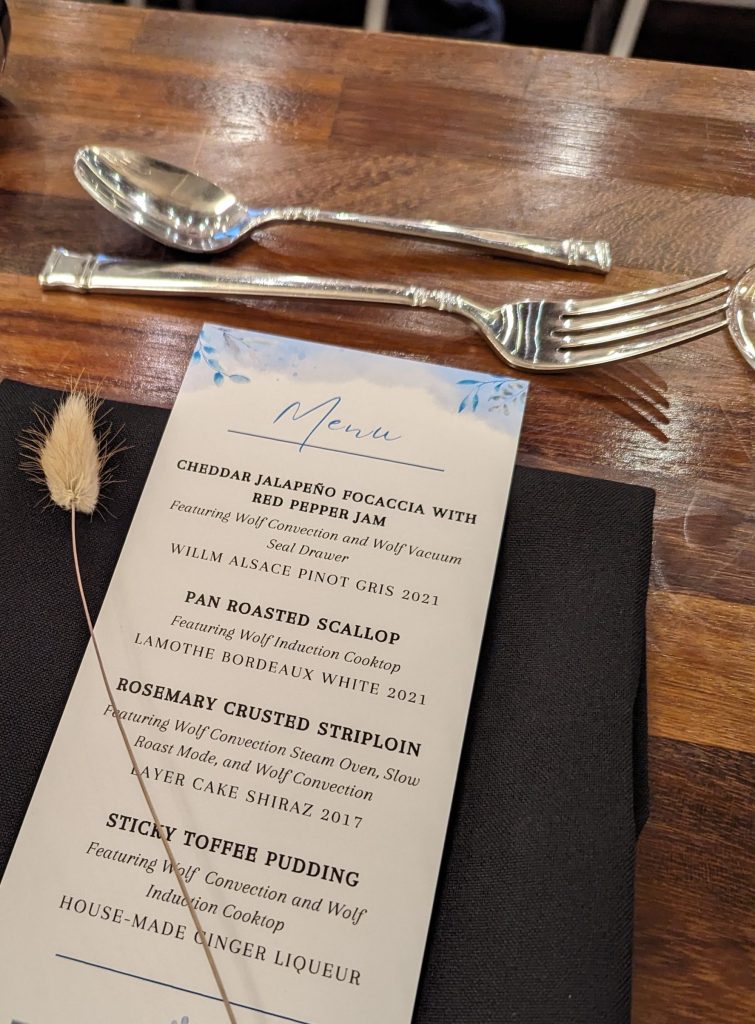
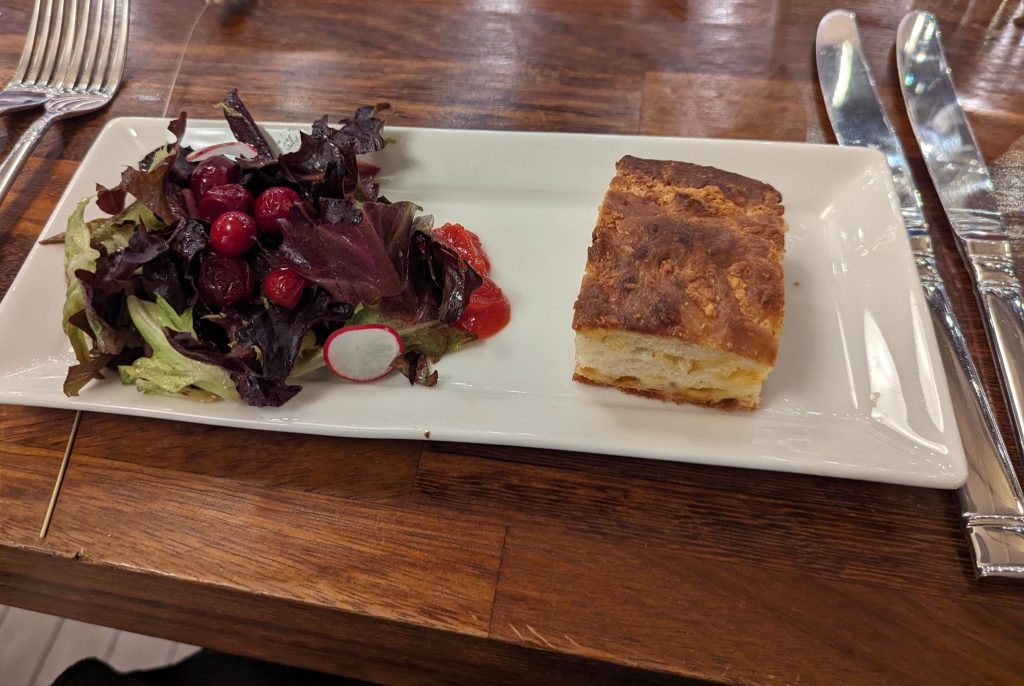
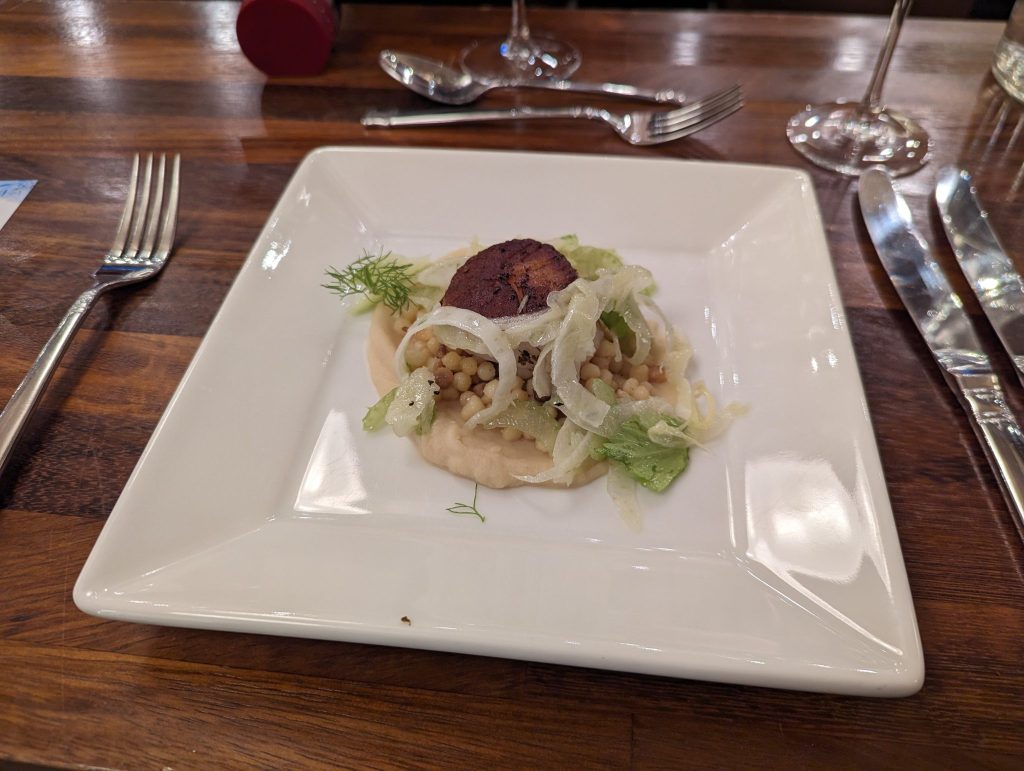
Vegetarian version was roast oyster mushrooms instead of scallop.
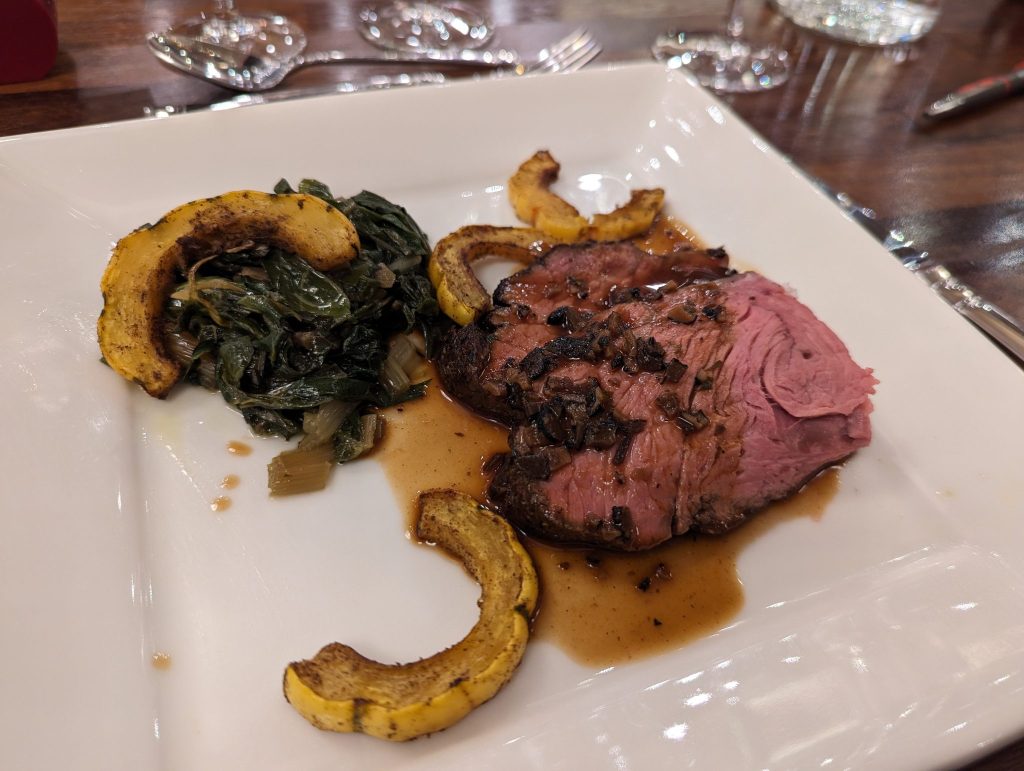
Vegetarian version was sad… Veggie sides were also sad.
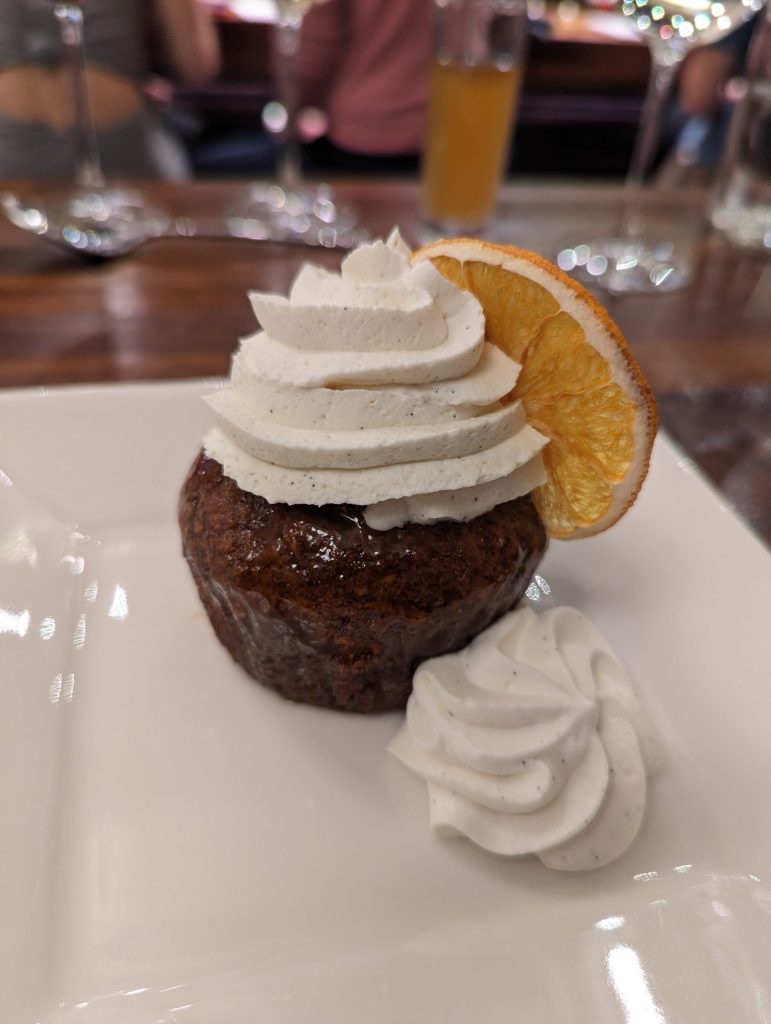
This cupcake thing was really good! And the whipped cream was super rich.
They also gave us a lot of alcohol.
I was making popcorn in the microwave in the mixing bowl I found and it cracked in half 🙁 Sometimes if the popcorn doesn’t mix itself well (the popping causes the kernels to mix themselves) because of the bowl shape, etc, it can cause a hot spot. I guess the hot spot was too much for this bowl and it broke. Maybe it had been dropped before…
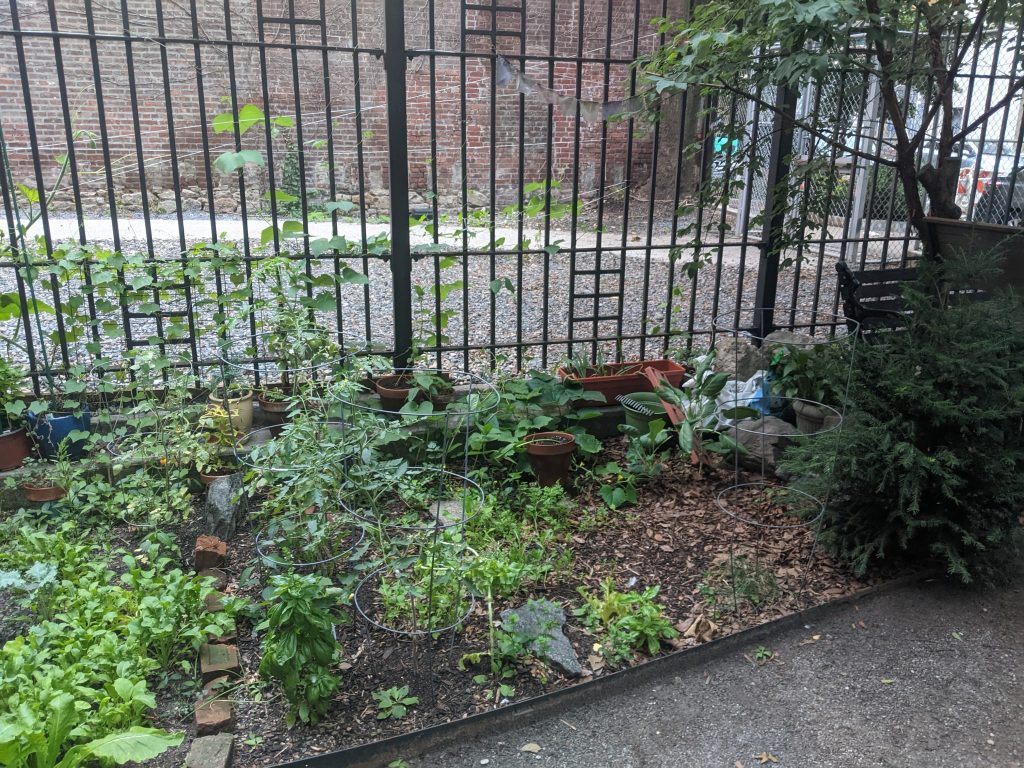
August of last year. Looking fairly lush. I actually had a fair bit more growth later in the season, even pretty late into the fall. The back fence was covered in vines — both my beans and other people’s veggies.
Front to back starting on the left side, I have basil, a pepper (hidden, gifted by a fellow gardener!), teeny baby onions, cherokee purple tomato (gifted by a fellow gardener!), cucumbers, and squash and stuff (volunteer brassica) at the back
Off to the right side are a yew (bush-like) and a box elder (small tree). Plus there’s a full-grown zelkova tree above the benches to the far right. So the plot isn’t too too sunny, especially that front right corner. The spot is too shady for veggies, so I’ve started putting some shade-tolerant native plants (inland sea oats, and volunteer violet transplants) in that corner.
I think the soil is really bad, too. I need to mix more compost in. I was supposed to do that over the winter, but time got away from me. Still planning on going some prep before planting seeds for this upcoming year.
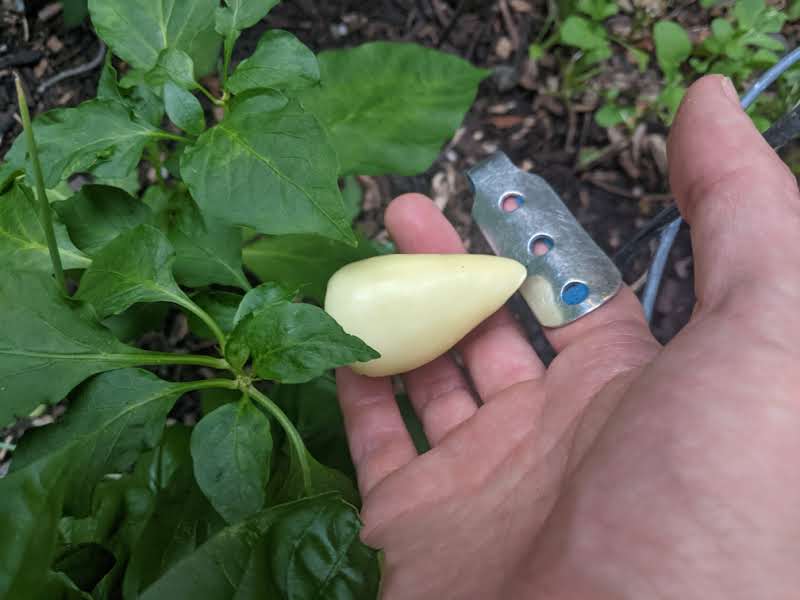
I harvested a couple peppers off of this plant. They weren’t spicy at all. The plant was kindly gifted to me by a fellow gardener. She got the seed from a coworker.
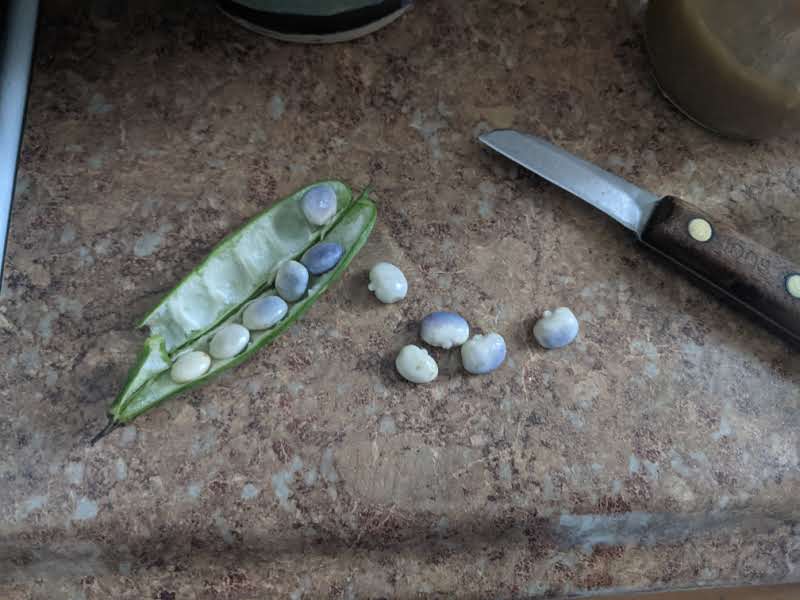
Last harvest of the year (November). There were several pods, more than shown here. I had these beans in soup. I also got a cucumber (not totally sure it was mine. The vines on the fence were all jumbled together. I definitely had planted a cucumber, though), basil, and some other odds and ends.
Traditional Indian (from Andra Pradesh and Tamil Nadu) cookies that are BOTH gluten free and vegan!! Plus really tasty. This was a great find for some of those parties where there are multiple people with food restrictions.
Making soy milk generates a lot of okara (soy lees) as byproduct. It still has a lot of goodness left, so I don’t like to throw it away, but the texture isn’t super appealing (like wheat bran). There are some traditional recipes meant to use up okara (like unohana), but these protein/nut/chocolate breakfast balls are better and pretty easy.
Mix and roll into balls.
We made jian bing recently (crepe with egg and veggies inside, Chinese style). Usually the crepe would be wheat dough you have to knead and roll out very thinly, but we made this batch using dosa batter (rice-based) and they turned out great!!
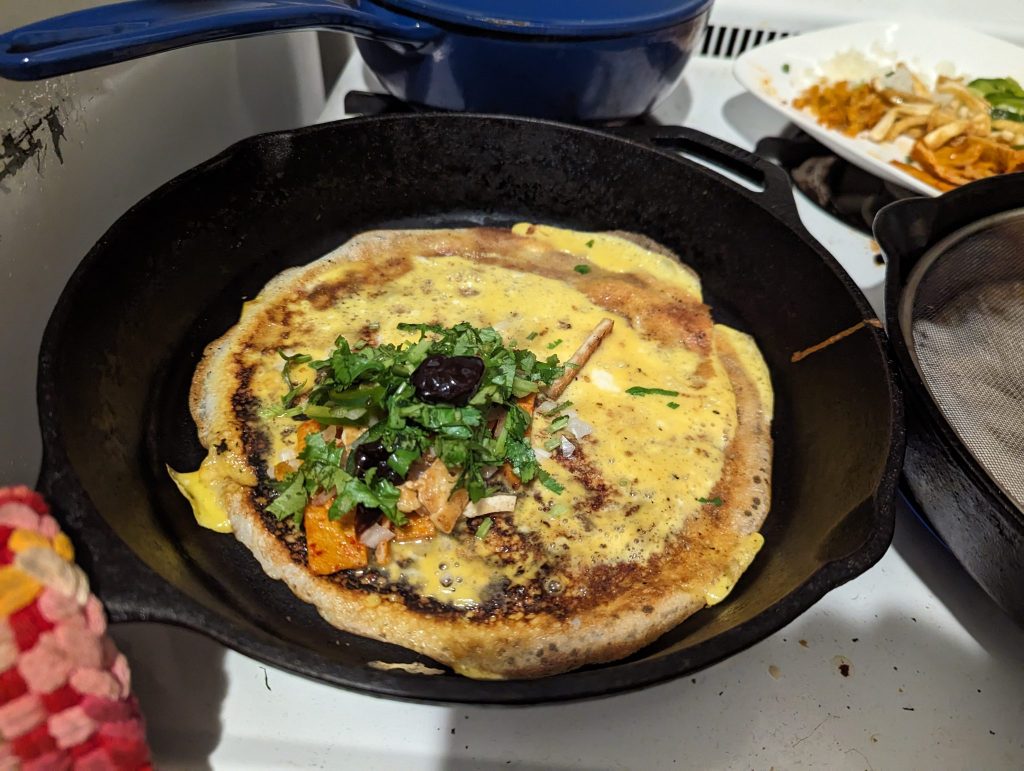
We can buy dosa batter from a nearby Indian grocery store, so it’s easier. (Of course, if we made the wrappers at home, they could be whole wheat.)
I used a variety of fillings: egg, fried tofu matchsticks, Chinese pickled spicy mustard stem, fishcake (Korean-style, leftover), minced onion, green onion, lettuce, and cilantro. Sauces were hoisin, peanut chili oil, super spicy oil (leftover from hotpot), and garlic chili sauce.
Pretty darn good overall. My only tip for next time is to use less hoisin. General cooking instructions here.
We had really good Japanese hotcakes at a restaurant, Rule of Thirds, in Greenpoint. I thought it would be fun to recreate them at home.
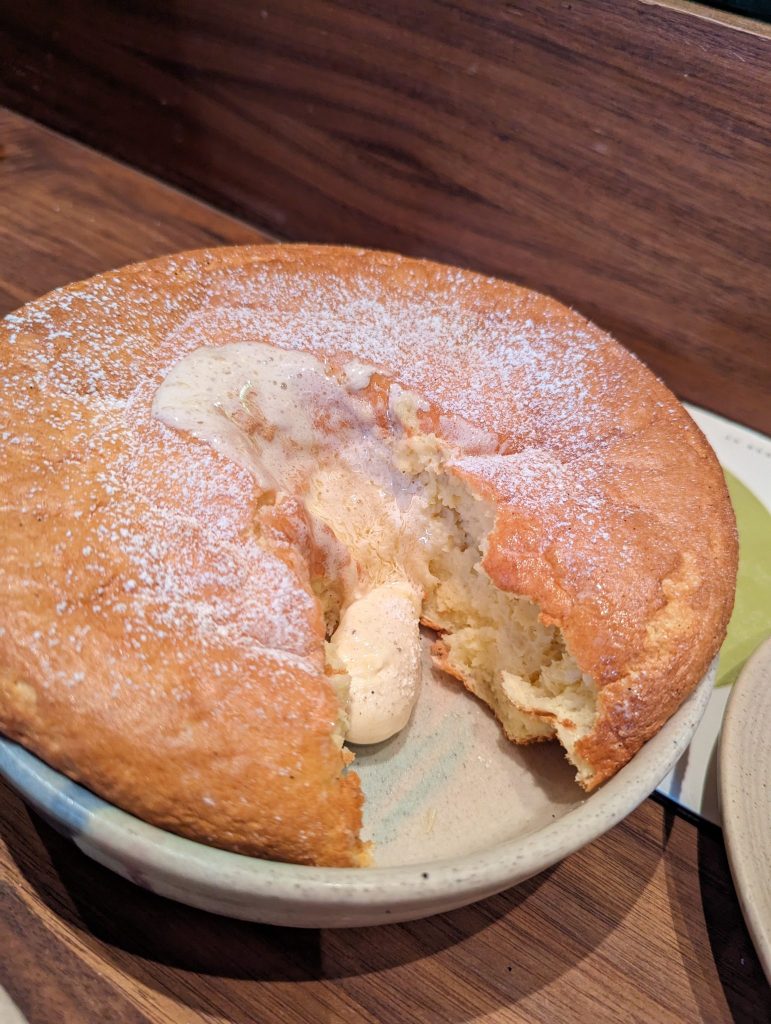
The original. Goo in middle is maple butter. Plus the restaurant had fancy counters (walnut, maybe?) and fancy design in general.
The original pancake was light and fluffy, and somewhat eggy but not custardy. Like a standard pancake, it is probably leavened by both eggs and chemical leavening. But the soufflé-like texture is probably from a relatively high proportion of egg and whipping the egg whites. It was not very sweet, similar to a standard pancake.
I figured I wanted some features of a standard pancake and some features of an whipped eggy cake-y thing (not really a soufflé — the hotcake weren’t that eggy).
We happened to see the hotcakes in progress at the restaurant. The batter was ladle-able, but had enough body to make a mound in the baking dishes (definitely egg fluff). It wasn’t particularly yellow.
I referenced three different recipes: sponge cake from Cook’s Illustrated, pancakes from Cooks Illustrated (oddly using lemon juice and milk rather than buttermilk), and pancakes from Joy of Cooking (milk version). I combined steps and ingredients from them that seemed to go in the direction I wanted, and I ended up with:
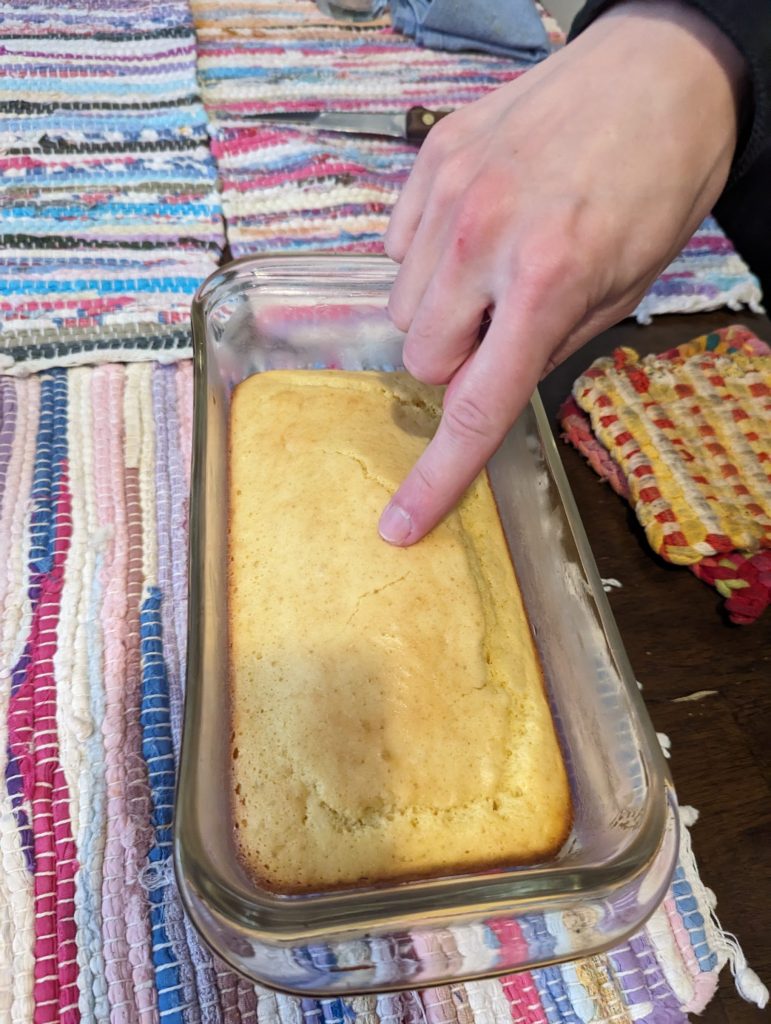
V1 of the home version. Not so close.
I think I reinvented corn bread (without corn). It wasn’t bad, but not very close at all to the restaurant version.
One big issue I had is that I added WAY too much milk, which caused the batter to be too liquidy. I added more flour to give structure to the batter, which made it too dense and cake-y. It seems like most of the structure needs to come from whipped egg whites. My pancake is also more yellow than the one at the restaurant. The eggs we get have super bright yolks, but maybe the “pancake” needs less yolk.
So for next time, I need less flour, and to reduce the overall amount of liquid (so less milk, butter, and maybe egg yolks).
Recipe to try next time:
As it turns out, there are recipes online for “Japanese soufflé pancakes”. I didn’t bother searching, because I didn’t think the “hotcake” recipes I would find would be soufflé-y enough. I think I’ll continue with the experiment because it’s fun.
Lemon juice and milk can be replaced with 2 cup buttermilk (for more normal pancakes).